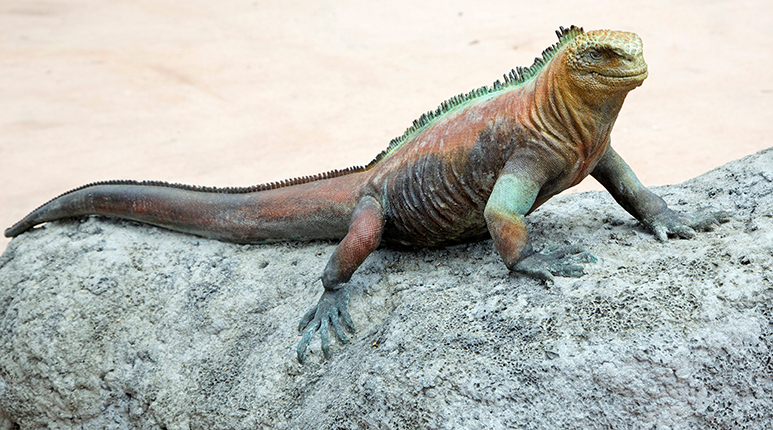Galapagos marine iguana
Amblyrhynchus cristatus

Fascinating Facts
- They are the world’s only marine lizard species.
- Threats to marine iguana populations include El Nino events, oil spills, introduced predators, and sea level rise from climate change.
- Due to their salty diet, they have salt expelling glands on their nose that create a white “wig” of salt over time.
- While clumsy on land, their long flat tail and strong claws help them to propel through the water and hold on to rocks when eating.
- Their dark skin helps them absorb heat from the sun after foraging in cold ocean waters.
Habitat/Diet
Marine iguanas live on rocky coast and intertidal zones. Females nest up to 2 km inland and adult males can be found in marine waters, up to depths of 20 m. They are herbivores, and feed exclusively on underwater vegetation, such as algae and seaweed.
Status in the Wild
Vulnerable – IUCN 2004
Range
Galápagos Islands of Baltra, Daphne, Darwin, Marchena, Pinzon, Rabida, Santa Fe, Seymor, Sin Nombre and Wolf, as well as southeast Pacific ocean waters.
Location in the Zoo
Reptiles and Birds Zone of the Sculpture Learning Plaza
